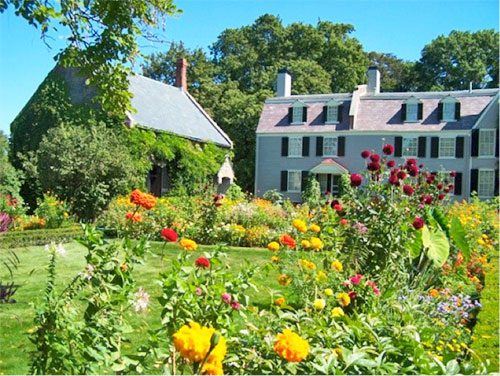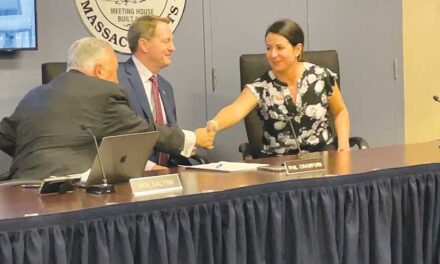Published July 3, 2019
By HELEN BREEN
The Declaration of Independence was framed by Thomas Jefferson and scrutinized by John Adams before acceptance on a hot July day in Philadelphia, 1776. The lives of these two Founding Fathers were destined to intertwine, for better or worse, until the day of their deaths.
Both would share diplomatic duties in France before the signing of the 1783 Peace Treaty in Paris. At the time, Jefferson became intimate with the Adams family, who had moved to France. Soon Adams would function as our first ambassador to England while Jefferson would do the same for France.

THE “OLD HOUSE” in Quincy where John Adams died, the family seat for four generations. To the left is the Stone Library, built later to preserve all Adams papers including the Jefferson correspondence.
The presidency
Recalled to America, John Adams would serve two terms as vice president under George Washington, an office which he described as “the most insignificant office” imaginable. In 1797, Adams succeeded Washington for one term as president with Jefferson as his vice president. Although an able administrator, Adams’ tenure was marked by political squabbling and “faction” within his Federalist Party.
After an acrimonious election in 1801, Jefferson defeated Adams and went on for two relatively successful terms as president. Political battles had placed a strain on the relationship between them. Both retired to their country seats, Adams to Quincy and Jefferson to Monticello, where they maintained a stony silence for 11 years.
Reconciliation
A truce was finally arranged between these Founding Fathers by Dr. Benjamin Rush, a friend of both men. Adams broke the ice on New Year’s Day 1812 by sending Jefferson a book by his son John Quincy Adams, whom Jefferson had been quite fond of as a youngster. Jefferson received the overture warmly.
In addition to family and domestic matters, the two elderly statesmen exchanged views on politics, religion, literature, the classics and contemporary affairs. Each avoided subjects painful to the other, particularly the looming dilemma of slavery.
Their advancing years and the hardships of travel in those days made an actual reunion impossible. However, Jefferson sent his grandson, Thomas Jefferson Randolph, to Quincy where he was cordially received. Jefferson also shared Adams’ pride when the latter’s son, John Quincy Adams, became our sixth president.
In all, 158 letters were exchanged, 109 from Adams and 49 from Jefferson over a period of 14 years. Both men knew that their correspondence would be preserved for posterity. The eloquence and depth of feeling contained in the correspondence make it a masterpiece of American literature.
A remarkable coincidence
In 1826, Americans everywhere looked forward to celebrating the 50th anniversary of July 4 with gusto. Adams and Jefferson both received many invitations to celebrate the occasion. Each declined because they knew that death was approaching. Adams sent only a toast to the townspeople of Quincy — “Independence forever!”
Adams died quietly on the evening of July 4, 1826 in the “Old House” in Quincy at the age of 91. His last words were, “Jefferson survives.” He did not know that on the same day, at Monticello in Virginia, Jefferson had breathed his last at age 82.
This singular event thrilled the imagination of the American people. President John Quincy Adams, upon hearing the news, replied, “The time, the manner, the coincidence … are marks of divine favor.”
So ended the circle of events for these two patriots that had begun 50 years before when the Declaration of Independence was signed in Philadelphia. For John Adams, our second president, and Thomas Jefferson, our third president, July 4 was an extraordinary day in life and in death.




